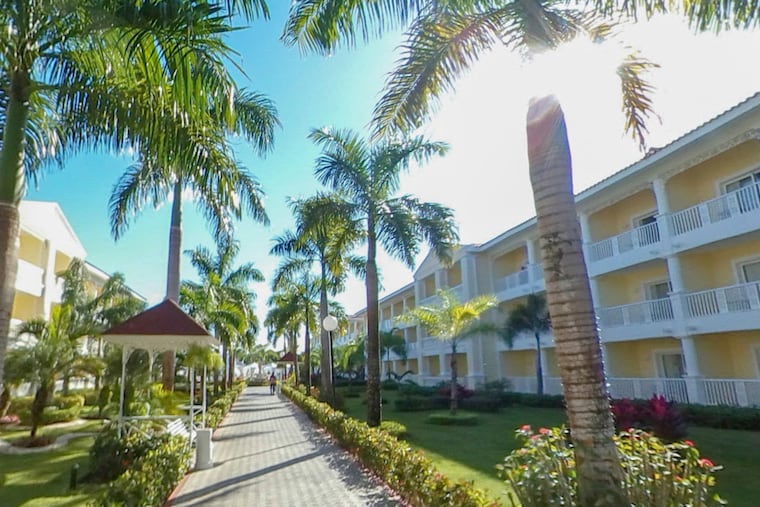After tourist deaths in the Dominican Republic, here’s what you should know about toxic exposures
Some of the circumstances of the recent deaths are reminiscent of a well-known case of toxic exposure a Delaware family suffered while on a trip to the Virgin Islands in March 2015.

The Dominican Republic has become increasingly popular as a travel destination. Last year, more than 6 million visitors flocked to the Caribbean nation known for its resorts, beaches, and golf courses.
Until recently, the biggest health concern for tourists has been sunburn. But a series of unexplained deaths at hotels, and a high-profile murder-for-hire attempt on former Boston Red Sox star David Ortiz, has some rethinking their travel plans.
On May 25, Miranda Schaup-Werner, 41, of Allentown, was a guest at the Bahia Principe hotel in the Dominican Republic when she collapsed and died just hours after checking in. Five days later at a sister hotel, Nathaniel Edward Holmes, 63, and Cynthia Ann Day, 49, of Maryland, were found dead. The couple appeared to have suffered respiratory failure and had fluid in the lungs. Officials are awaiting toxicology results in both cases.
There have been at least eight recent American deaths in the country.
Reynold A. Panettieri Jr., a physician with the Rutgers Institute for Translational Medicine and Science, said that while the causes of the deaths are not yet known, there are similarities among the cases.
“If there are multiple people in the party that feel ill, that speaks to poisoning or toxic exposure,” Panettieri said. Deaths from person-to-person respiratory illnesses don’t occur within a few hours, he said.
Some of the circumstances of the recent deaths are reminiscent of a case of toxic exposure a Delaware family suffered while on a trip to the U.S. Virgin Islands in March 2015.
Stephen Esmond, an administrator at the Tatnall School in Wilmington, and his sons, Sean and Ryan, experienced paralysis and were hospitalized for an extended period after they were sickened by the pesticide methyl bromide. The chemical was banned for indoor residential use in 1984, but had been used to treat the condo where they were staying. Earnings reports suggest the family received a nearly $90 million settlement from the parent company of Terminix. The company was fined about $10 million.
Toxic exposure happens everywhere and is more common than most would think, said James J. Maron, a partner with Maron, Marvel, Bradley, Anderson & Tardy of Wilmington, a firm that specializes in toxic cases and environmental litigation. Maron, who was the attorney for the Esmond family, declined to comment on the family’s situation.
Tourists headed to warmer climates should expect to encounter some level of pesticide use. But most of the bigger hotels are knowledgeable about the products they use, he said.
Before making reservations, call the hotel and ask what pesticides they are using, Maron said. “If they say they are using nothing, they are lying,” he said.
If there are questions about toxins in a room while traveling, get out, said Panettieri. Open the doors and windows to decrease exposure, he said.
More worrisome than chemical exposures are serious infections from disease-carrying bugs and mosquitoes, Maron said.
Mosquito bites are especially risky, said Maron, who contracted Dengue fever, a mosquito-borne tropical disease, while traveling. He suggests tourists bring and use insect repellents.
The United States is not immune to toxic exposures, but they are more often seen in commercial or industrial settings. Two cases of toxic exposure Maron pointed to include the weed killer, Roundup, where a jury recently awarded $2 billion in damages to people who claimed they contracted cancer after years of use, and drinking water in Flint, Mich., that was found to have unsafe levels of lead.
Tips for tourists
If travelers are concerned about possible exposure to toxins, Panettieri suggests following the guidelines for carbon monoxide poisoning by getting to fresh air and seeking medical help. Exposure to carbon monoxide, a colorless, odorless, tasteless gas, can result in a life-threatening medical emergency.
According to the Mayo Clinic, signs and symptoms of carbon monoxide poisoning include:
Dull headache.
Weakness.
Dizziness.
Nausea or vomiting.
Shortness of breath.
Confusion.
Blurred vision.
Loss of consciousness.